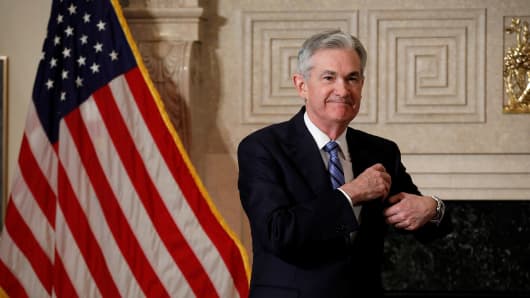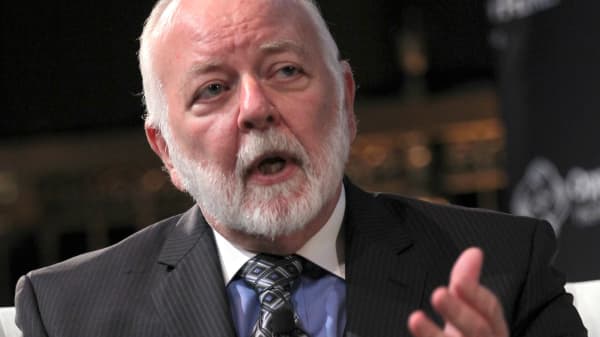
Aaron P. Bernstein | Reuters
Federal Reserve Chairman Jerome Powell arrives to take the oath of office at the Federal Reserve in Washington, U.S., February 5, 2018.
Restating this point, for a decade there has been a great deal of money around at real prices below zero. This era is over. Anyone who does not understand that this is a significant fundamental change needs to take a thoughtful look at these numbers and think about what they mean.
What make this change more significant is that it is occurring a time when the demand for money is rising. First, the United States government is going to push its $20 trillion debt much higher. Second, the probability of accelerating growth in the economy with moderately higher inflation indicates that the private sector needs more funds. Third, the resumption of economic growth in the Euro zone indicates more money is needed there to maintain forward momentum.
Increased demand for funds at a time when the growth in supply is easing will drive money costs higher and financial values lower. This is about as fundamental as it gets.
But let's dig deeper. The scoring mechanism in the financial sector is the dollar. If the value of the dollar changes, then the financial assets that it is measuring change. From the trough 10 years ago to the peak at the very end of 2016, the value of the dollar rose by an estimated 41 percent. From the peak in late 2016 to the present it has dropped by 11 percent.
Moreover, while the Treasury Secretary of the United States has indicated that he wants a strong dollar, he has also indicated that the United States would not intervene in currency markets to support the dollar — i.e., he would allow this currency to drop further in value in the short run.





